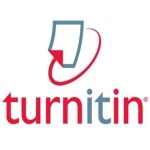Analisis Perilaku Hidup Bersih dan Sehat Siswa Madrasah Aliyah Babul Ulum Mariana
DOI:
https://doi.org/10.33862/citradelima.v8i2.481Keywords:
PHBS, Indicators PHBS, StudentsAbstract
Schools are one of the settings that need to implement PHBS. The impacts that will arise if PHBS is not implemented in schools can be a decrease in achievement and enthusiasm for learning, a decrease in the image of the school, and an unconducive learning atmosphere due to a dirty environment and classroom conditions, unhealthy snacks, and unorganized waste disposal. These conditions will also cause various diseases. The purpose of this study was to analyze the clean and healthy living behavior of students at Madrasah Aliyah Babul Ulum. The research design used cross-sectional analysis. The population in this study were all students at Madrasah Aliyah Babul Ulum, totaling 82 people. The sample size in this study was the total population, namely 82 respondents. Bivariate analysis was carried out using the Pearson Correlation test, a confidence level of 95% and a significance limit with an ? value of 0.05. The results of the data analysis showed that CTPS had a p value of 0.018 on students' PHBS. Consuming healthy snacks in the school canteen p-value 0.147, free from cigarette smoke p-value 0.614, and disposing of garbage in its place p-value 0.199 on students' PHBS. The conclusion in the study showed a significant influence between the CTPS variable and Students' PHBS, but there was no influence between the variables of consuming healthy snacks in the school canteen, free from cigarette smoke, and disposing of garbage in its place with students' PHBS.
Downloads
References
Arinda Riska, e. a. (2022). Upaya Peningkatan Pembiasaan PHBS Melalui Penggunaan Media Video Animasi. Jurnal Edukasi. 6 (2), 130-144. https://ejournal.unsap.ac.id/index.php/jesa/article/view/128
Cahyadi, A. (2022). Perilaku Hidup Bersih dan Sehat (PHBS) Anak Sekolah Dasar Di Sdn 13 Kolo Kota Bima. Jurnal Pendidikan Mandala. 7 (4), 961-964 http://dx.doi.org/10.58258/jupe.v7i4.4423
Chyntia L. Rembet, e. a. (2023). Faktor-Faktor Yang Berperan Terhadap Perilaku Hidup Bersih dan Sehat Siswa Siswi SDN 2 Tataaran Kecamatan Tondano Selatan Kabupaten Minahasa Tahun 2023. Jurnal Kesehatan Tambusai, 4 (2), 597 - 609. https://doi.org/10.31004/jkt.v4i2.14627
Julianti R., N. H. (2018). Pelaksanaan Perilaku Hidup Bersih Dan Sehat (PHBS) Di Lingkungan Sekolah. Jurnal Ilmiah Potensia, 3 (2), 11-17. https://doi.org/10.33369/jip.3.2.76-82
Kemenkes RI, 2. (2021). Gerakan PHBS Dalam Data Riset Kesehatan Dasar. Retrieved Oktober 20, 2022, from https://ayosehat.kemkes.go.id/gerakan-perilaku-hidup-bersih-dan-sehat-dalam-data-riset-kesehatan-dasar
Kemenkes, R. (2017). Modul Pelatihan Pembinaan Kebugaran Jasmani. Jakarta: Kemenkes RI. https://kms.kemkes.go.id/contents/1717661379322-ilovepdfmerged39compressed.pdf
Kurnia. (2017). Pedoman Usaha Kesehatan Sekolah. Jakarta: Bee Media Pustaka.https://perpustakaan.jakarta.go.id/book/detail?cn=INLIS000000000794957
Lina. (2017). Perilaku Hidup Bersih dan Sehat (Phbs) Siswa di SDN 42 Korong Gadang Kec. Kuranji Padang. Jurnal Promkes, 4 (1), 61-71 .http://jurnal.unmuhjember.ac.id/index.php/TIJHS/ article/view/4864
Palembang, D. K. (2022). Profil Kesehatan Kota Palembang Tahun 2021. Palembang: Dinkes Kota Palembang.
Pratita, E. A. (2022). Penerapan Perilaku Hidup bersih Dan Sehat (PHBS) di Lingkungan Sekolah. Tasikmalaya: PRCI. https://www.rcipress.rcipublisher.org/index.php/rcipress/catalog/book/213
Redlo, W. &. (2020). Hygienic and Healty Lifestyle Urban Village Of Rangkah Surabaya. Jurnal Promkes, 8 (1), 47-53 .http://journal.universitaspahlawan.ac.id/index.php/jkt/article/view/26921
RI, K. (2015). Kesehatan Dalam Kerangka Sistainable Development Goals (SDG'S). Jakarta: Kemenkes RI.Https:/Www.Academia.Edu/34077354/Kesehatan_Dalam_Kerangka_Sustainable_Development_Goals_Sdgs
RI, K. K. (2019). Profil Kesehatan Indonesia tahun 2018. Jakarta: Kemenkes RI.https://www.kemkes.go.id/app_asset/file_content_download/Profil-Kesehatan-Indonesia-2019.pdf
Riskesdas. (2018). Laporan Nasional Riskesdas 2018. Jakarta: Kementerian Kesehatan RI.https://repository.badankebijakan.kemkes.go.id/id/eprint/3514/
Srisantyorini Triana, E. (2020). Hubungan Pengetahuan dan Sikap Siswa Terhadap PHBS di SD Negeri Sampora I Kecamatan Cisauk. Muhammadiyah Public Health Journal, 1 (1) 63-69. https://doi.org/10.24853/mphj.v1i1.7025
Wulandari, e. a. (2021). "Praktik Gerakan Sekolah Menyenangkan". UAD PRESS. Yogyakarta. Yogyakarta: UAD PRESS.
Yulianingsih, E. A. (2022). Analisis Perilaku Hidup Bersih dan Sehat Di Sekolah dasar. Jurnal Pancar, 6 (1), 193-199. https://doi.org/10.52802/pancar.v6i1.332
Zukmadini, E. (2020). Edukasi Perilaku Hidup Bersih Dan Sehat (PHBS) Dalam Pencegahan Covid-19 Kepada Anak-anak di Panti Asuhan. Jurnal Pengabdian Magister Pendidikan 3(1), 1043-1054. 10.29303/jpmpi.v3i1.440
Downloads
Published
Issue
Section
License
Copyright (c) 2024 Dewi Sayati, Atma Deviliawati, Nani Sari Murni

This work is licensed under a Creative Commons Attribution-ShareAlike 4.0 International License.







.png)





